Mapping the Collapse of Sub-Primes
Labels: finance
Labels: finance
Labels: Houston Streets, urbanism
Classes start on Monday, so my pleasure reading will be severely limited henceforth. But I wanted to make a few notes regarding Blessed McGill by Edwin Shrake. Shrake is a writer who is possibly best known as the late Ann Richards' main squeeze. He’s one of those writers along with Gary Cartwright and Peter Gent who came out of the sports world, moved to Austin, started smoking dope and hanging with Jerry Jeff and Willie and Waylon, and generally had a good ole cosmic time. See Texas Literary Outlaws for details. It has been suggested that the surplus of booze, pot, cocaine and other sundry drugs consumed by these guys held them back as writers. Maybe so—we can’t be sure they would have written any better if they weren’t so fucked up.
In any case, Shrake wrote several fairly serious novels (unlike his old pal Dan Jenkins, who wrote lots of humorous novels but certainly lacked any literary ambition). I’ve read one, But Not For Love (1964), which is OK but not great. You get the idea that he read The Gay Place and felt inspired to do his own urban
I found a copy of his cosmic cowboy Western, Blessed McGill (1968), and decided to give him another try. This book was excellent. It rambles back and forth in time, and tells the story of Peter Hermano McGill, son of an Irish father and Spanish mother in early
You sense that Shrake was again influenced by another novel, this time Little Big Man (1964) by Thomas Berger. I’ve never read it but have seen the movie. But whether Shrake was influenced or not, Blessed McGill stands on its own. What I like about it is the way Shrake builds a believable and complex world described by McGill. Supposedly he researched the hell out of this book, and it shows in the wealth of detail, but never does the detail feel false or expository. It always feels like something that McGill would notice and discuss.
Another thing I like about it is the way it is an adventure, an odyssey, that becomes literature. This strikes me as a rare combination. The obvious book that comes to mind is Moby Dick. But what Blessed McGill reminded me of more was Devil to Pay in the Backlands by João Guimaraes Rosa. Devil to Pay in the Backlands was a vaster, richer book, but the flavor is similar.
Finally, as I read it, I kept thinking what a great movie it would make. It would be a real Western epic.
I’m sure Blessed McGill is out of print, but it should be easy enough to find if you are interested. I recommend it.
Labels: books


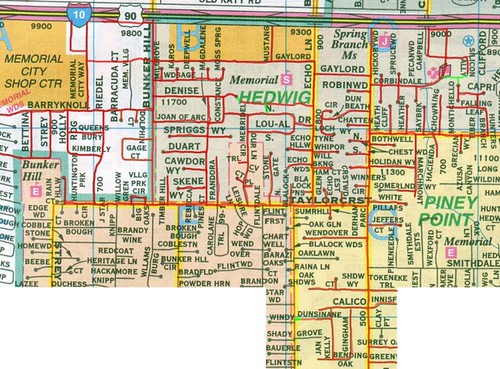
My ride started outside




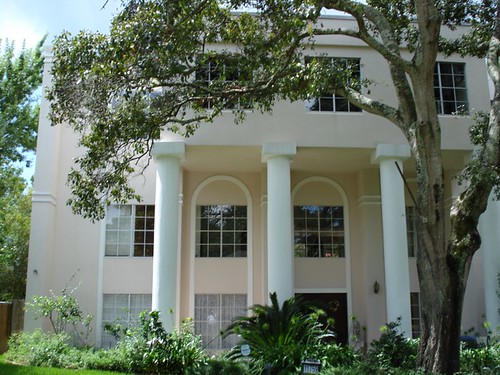
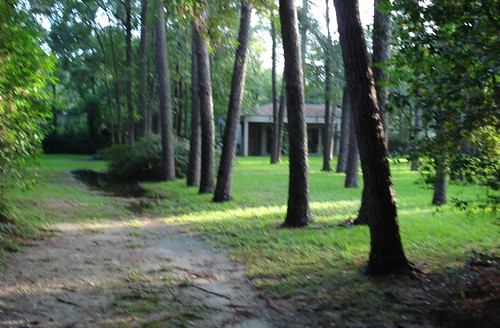
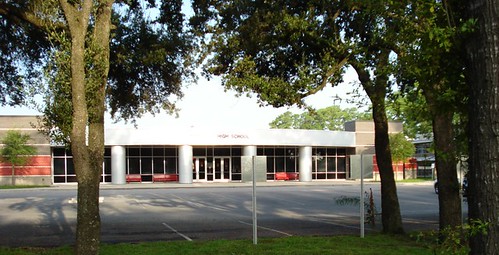
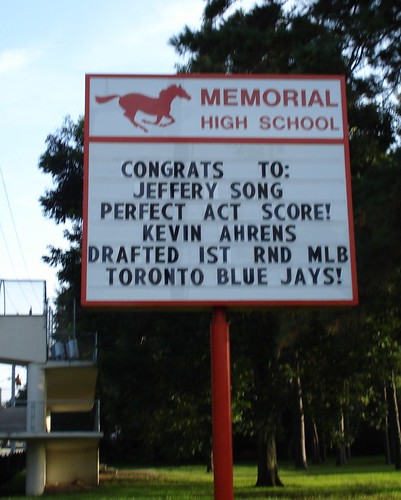

This plaque gives a little history of


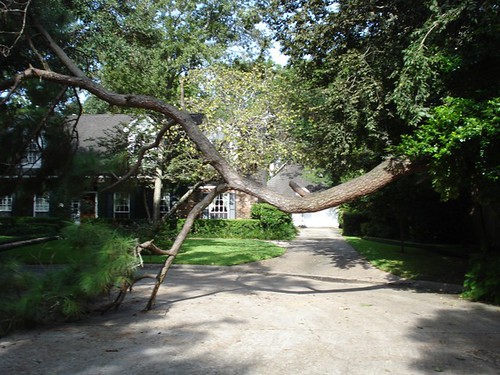

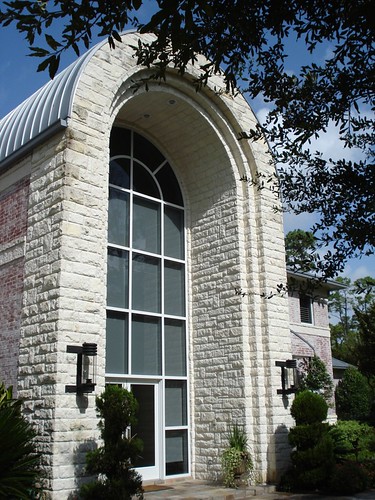



Labels: 77024, Houston Streets, Memorial Villages
Some of the books I’ve read this summer:
Harry Potter and the Deathly Hallows by J.K. Rowlings. Not much to say about this book that hasn’t been said. It has most of the flaws that critics have mentioned. But I did find it compelling and moving. It is very much unlike the previous six volumes—this is the first volume where Harry (and Ron and Hermione) don’t actually attend school. They should be doing their last year at Hogwarts, but because Voldemort and his Death Eaters have successfully effected a coup, they are now fugitives. The book consists of them trying to find and destroy horcruxes (parts of Voldemort’s soul), while trying to avoid capture. One interesting way to view it is from the point of view of an ordinary wizard who hates what is happening but is powerless. He or she would hear rumors and underground broadcasts about Potter, and his various daring (if inexplicable) guerilla actions. In one adventure, Harry, Ron and Hermione sneak into the Ministry of Magic in disguise to steal a horcrux. In the process, however, they free a bunch of “mudbloods” who are being processed and tried (the Ministry of Magic combines Nazism—racial blame-throwing—and Soviet Communism—show trials). The news of this daring raid must have filtered out and cheered people, although it is not until after the war that Harry would get credit for it.
Spent by Joe Matt—This is the grimmest volume of Joe Matt’s various autobiographical comics, dealing with his porn addiction. He seems unbelievably self-aware. This seems crazy because you would think that someone so self-aware would deal with his problems. But I think that is the point of these books, and Spent in particular. Addiction and other obsessive behavior are mysteries not because their victims have self-justifying fantasies about their behavior, but rather they know their behavior is a problem but are powerless to change it. Spent ends with no resolution, no therapy that turns Joe Matt into a “normal” guy.
The Sparrow and Children of God by Mary Doria Russell—Two science fiction novels dealing with first contact. The main idea here is that in the near future, we discover radio broadcasts from Alpha Centauri. The Jesuits jump on it and send a mission to meet these people before the U.N. or any other country can get a mission together. Interestingly, we are the technologically superior species, but the difference is relatively slight. You can imagine what happens—our presence disrupts the society we find there in utterly perplexing and unpredictable ways. In some ways, the changes are positive (an oppressed caste turns on its masters) but in some ways very negative (the masters are virtually extinguished). It is a little similar to The Mote in God’s Eye and The Gripping Hand by Larry Niven and Jerry Pournelle, but Russell is a better writer about the subtleties of human nature. That said, her attempts and dialects and accents are cringeworthy.
The Glory and the Dream by William Manchester. A two volume history of the
The Hobbit by J.R.R. Tolkien. I read this when I was in junior high and have never reread it since, even though I have reread The Lord of the Rings and even The Simarillion several times. It’s interesting to realize how much stuff he already knew about the mythos he was creating when he wrote The Hobbit—the hidden city of
Freedom at Midnight by Dominique LaPierre and Larry Collins. This is a great one-volume history of the final months of the Raj and the independence of
A Savage War of Peace by Alistair Horne. This history of the Algerian War for independence has lessons for the
Chances Are by Michael Kaplan and Ellen Kaplan. This is a popular science book about probability and statistics, and of those I’ve read (a few, because the subject interests me a lot), this is the best. It gives just enough history of the subject, explains the centrality of the subject in all modern sciences, and most important, explains various laws of probability very well, including the extremely counterintuitive (for me) Bayes' theorem and the intriguing Parrondo’s Paradox.
Mutiny on the Bounty by Charles Nordhoff and James Hall. This is another one I read a long time ago—in 1985 I believe, the first summer I went to sea on a seismic boat. I brought books with me that were either nautical or “exotic” to my then 22 year old mind. I brought Mutiny, Moby Dick, a Borges story collection, and Guerillas by V.S. Naipaul. The latter two were “exotic” in my mind by virtue of being writers from little known (by me) third world countries. Anyway, Naipaul and Borges subsequently became two of my favorite writers. But I loved Mutiny and Moby Dick as well.
Like rereading The Hobbit, rereading Mutiny is a very interesting experience. It can’t be read quite the same way after having read all the Patrick O’Brian novels. My knowledge of life aboard a English naval vessel in the age of sail is infinitely richer. While Nordhoff and Hall don’t approach O’Brian as stylists, and are limited creatively with what they can do with the characters (since all the characters except for the narrator were real people who did actual things during and after the voyage of the Bounty, which as far as I can tell Nordhoff and Hall try to be very accurate about), the book benefits from their painstaking accuracy and unwillingness to shy from the unpleasantness associated with sea life. And it’s a ripping yarn.
Labels: books